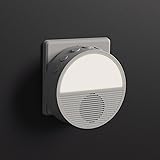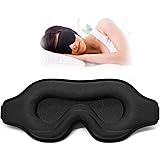Embrace Tranquility: Your Guide to Bedtime Yoga for Deep Sleep and Relaxation
As the demands of our daily lives intensify, the sanctity of our evening wind-down routine becomes paramount. It is in these crucial hours that we transition from the active, often frenetic pace of the day to a state conducive to restful sleep. For many, this shift isn’t seamless; racing thoughts, lingering stress, and physical tension can disrupt the natural unwinding process. Yet, cultivating a deliberate bedtime ritual can profoundly impact sleep quality, and few practices offer the gentle efficacy of bedtime yoga.
The accompanying video provides an excellent introduction to an accessible series of stretches, performed entirely within the comfort of your bed. This unique approach to restorative yoga offers an unparalleled sense of ease and support, making it ideal for those seeking to mitigate the day’s accumulated stress without requiring a dedicated studio space or even changing out of pajamas. Moreover, engaging in these gentle movements and mindful breathing exercises directly targets the physiological mechanisms that govern relaxation and sleep onset.
The Science of Serenity: How Bedtime Yoga Optimizes Sleep
The practice of bedtime yoga extends beyond mere stretching; it is a sophisticated method of engaging the parasympathetic nervous system, often dubbed the “rest and digest” system. During our waking hours, the sympathetic nervous system, responsible for our “fight or flight” response, is frequently overactive. Chronic stress perpetuates this state, leading to elevated cortisol levels, increased heart rate, and muscle tension – all antithetical to quality sleep.
1. **Harnessing the Vagus Nerve:** Gentle yoga poses and controlled breathwork, or pranayama, stimulate the vagus nerve, a critical component of the parasympathetic nervous system. This activation signals the body to calm down, slowing the heart rate, reducing blood pressure, and encouraging a profound sense of relaxation. Imagine if a simple sequence of movements could actively switch off the internal alarm system that keeps you awake; this is the power of a dedicated evening practice.
2. **Releasing Somatic Tension:** The transcript highlights several poses designed to release physical tension, particularly in the lower back and hips. This often overlooked benefit is crucial. Daily activities, prolonged sitting, or even unconscious stress responses can lead to significant muscular tightness, which can be a primary contributor to discomfort when trying to sleep. By gently lengthening the fascia and musculature, these poses alleviate physical constraints, allowing the body to settle more comfortably into the mattress.
3. **Cultivating Mindfulness and Present Moment Awareness:** A pervasive issue for insomniacs and restless sleepers is an overactive mind, replaying the day’s events or catastrophizing about tomorrow. The video’s emphasis on “letting go” and reminding the mind “the only place that truly exists is right here, right now” is a direct application of mindfulness principles. This mental anchoring practice detaches consciousness from external stressors, guiding attention inwards to the breath and body sensations, thereby quieting the cognitive chatter that often precedes sleeplessness.
Key Poses for a Restorative Night’s Sleep
The guided sequence in the video masterfully integrates several highly effective poses, all adaptable for a bed-based practice. Let’s delve into their specific benefits:
1. Full Wind Pose (Pawanmuktasana) and Half Wind Pose
The instructor wisely begins with the Full Wind Pose, followed by its half variation. This foundational pose is a potent decompressor for the lower back and digestive system. By gently drawing the knees towards the chest, the lumbar spine experiences a subtle traction, alleviating compression that may have built up throughout the day. Furthermore, the light pressure on the abdominal area can stimulate peristalsis, aiding digestion and promoting the release of trapped gas, which can contribute to nighttime discomfort. The “belly press into your thighs” cue is excellent, enhancing this internal massage and encouraging diaphragmatic breathing.
Transitioning to the Half Wind Pose extends these benefits, allowing for a more focused stretch on one side of the body while providing critical support for the extended leg on the bed. This asymmetrical engagement prepares the body for deeper twists, ensuring the spine is adequately warmed and pliable.
2. Supine Spinal Twist (Supta Matsyendrasana Variation)
Following the wind poses, the gentle Supine Spinal Twist is introduced. This pose is a cornerstone of restorative yoga, famed for its ability to release tension along the entire spinal column. The instruction to “slowly draw your knee across your body, extending your right arm opposite” is key. Twists are profoundly detoxifying and help to rehydrate the intervertebral discs. More importantly for sleep, they wring out residual stress and mental clutter. Imagine the spine as a sponge, and the twist as a gentle squeeze, releasing stagnant energy and making space for renewed calm. The bed offers exceptional support, allowing a deeper, more passive release without strain, adhering to the principle of “no need to pull, or force.”
3. Supported Butterfly Pose (Supta Baddha Konasana)
The sequence culminates beautifully with the Supported Butterfly Pose. Allowing the “feet to come together, knees fall open like a butterfly” is a deeply grounding and hip-opening posture. The hips are often repositories of emotional tension, and gently opening them can facilitate a profound emotional and physical release. This pose also subtly stretches the inner thighs and groin, areas that can become tight from daily activities. With the entire body supported by the bed, this becomes an intensely restorative posture, inviting a surrender to gravity and an internalization of focus. It’s often referred to as a “goddess pose” due to its nurturing and expansive qualities.
Beyond the Poses: The Art of Letting Go
The video emphasizes the powerful mental aspect of this bedtime yoga practice, repeatedly urging the practitioner to “relax and let go.” This isn’t just a suggestion; it’s an invitation to engage in a deliberate mental disengagement from the day’s exigencies. The cues to “relax your gaze underneath your eyelids,” “soften the space between your eyebrows,” “relax your jaw,” and “soften your tongue away from the roof of your mouth” are incredibly potent. These are often unconscious sites where we hold significant tension, indicators of an overactive nervous system. Consciously releasing these areas sends powerful signals to the brain that it is safe to relax and prepare for sleep.
Furthermore, the guidance to feel the “body so soft and heavy, sinking into the bed beneath you” encourages proprioception and interoception – awareness of the body’s position and internal sensations. This grounded awareness shifts attention away from external distractions and internal anxieties, firmly planting the mind in the present moment. This transition from cognitive processing to embodied sensation is the essence of pre-sleep mindfulness, setting the stage for deep and uninterrupted slumber.
Incorporating this gentle bedtime yoga routine into your nightly ritual can be a transformative step towards reclaiming your sleep and fostering a more peaceful existence. The accessibility of performing these stretches directly in bed eliminates common barriers, making a consistent practice not just a possibility, but a delightful expectation.








